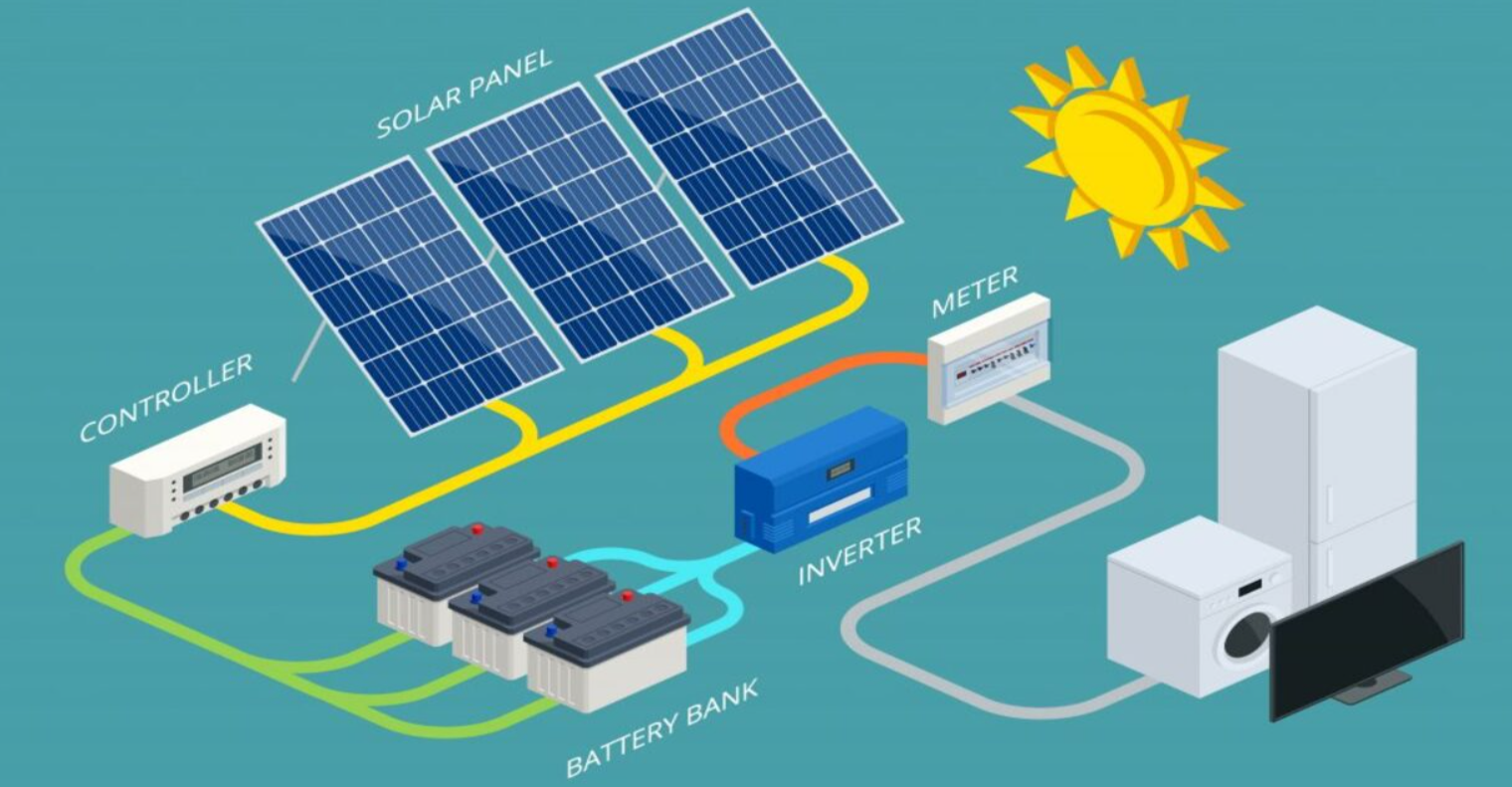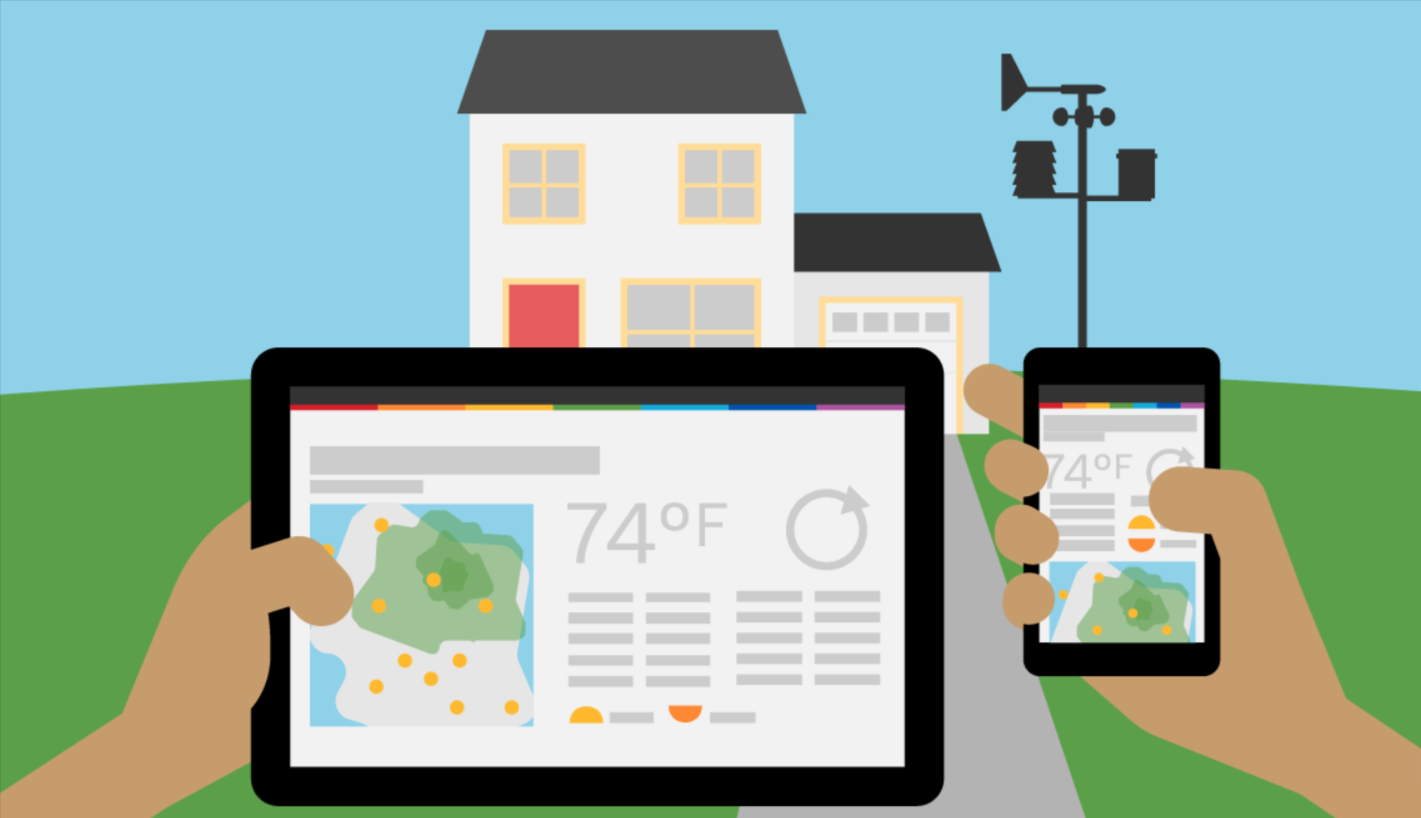How to Build a Home Solar Power System

With electric bills going up and folks worrying more about the planet, lots of people with homes are choosing solar energy as a solid option that's good for the environment. A home solar power system lets you make your own power from the sun, which means you don't rely as much on the usual power stuff, and it can cut down how much you pay for energy.
Getting your own solar power setup at home might sound tricky, but if you know what's what and plan it out well, it can pay off. We're gonna show you all the steps you need one by one.
1. Getting a Grip on How a Home Solar Power System Does Its Thing
Before you jump into setting up your solar system, you've gotta get how it does its job. A normal setup has:
✔ Solar Panels – Turn sunbeams to power
✔ Charge Controller – Manages the juice going to the storage unit
✔ Battery Bank – Keeps extra electric stuff for when you need it later
✔ Inverter – Flips stored DC current into AC current for home gadgets
✔ Mounting System – Holds up and locks down the light catchers
✔ Wiring & Connectors – Send the zaps from one part to another
These bits and bobs snag, hang onto, and hand out sunny juice in your pad.
2. Figuring Out How Much Power You Need
Before you buy any of that gear, you gotta figure out how much zing your place uses up.
Stuff you do to nail down your power cravings:
Check out your power bill – Find your usual monthly energy use in kWh.
Make a list of your big energy eaters – Jot down the watts they use each day.
Figure out how much juice you need daily – Multiply the gadget's watts by its daily hours of use.
Work out how many panels you'll need – Take your whole daily power use and divide it by the hours of sun you get.
Say your pad uses 30 kWh each day and the sun's out for about 5 hours a day where you live. In this case, you gotta get a 6 kW solar setup ('cause 30 ÷ 5 equals 6 kW).
3. Picking the Best Solar Panels for Your Place
Solar panels come in several kinds, each boasting its perks.
Kinds of solar panels:
✅ Monocrystalline Panels – Top-notch performance durable, ace for small areas
✅ Polycrystalline Panels – Easier on the wallet, efficiency's a tad less
✅ Thin-Film Panels – Super light, bendy, killer for unconventional spots
Got a tight spot on your roof? Go for monocrystalline panels; their superior performance shines there. But hey, if you're watching your spending, polycrystalline panels are your go-to for a sweet deal.
4. Picking the Perfect Battery to Store Energy
Solar power units use batteries to keep extra energy handy for when it's overcast or dark out. Picking a suitable battery hinges on what you need energy-wise and how much cash you've got.
Kinds of solar storage units:
🔋 Lead-Acid Units – Easy on the wallet but don't last too long.
🔋 Lithium-Ion Units – Top-notch performance and stick around longer, but they hit your wallet harder.
🔋 Saltwater Units – Kind to nature but not something you see every day.
Lithium-ion units get the most thumbs up cause they're tough and work like a charm.
5. Picking a solid Inverter
Solar panels generate direct current (DC) electricity, yet most home devices need alternating current (AC). A device called an inverter makes the switch from the DC energy in storage to AC power.
Kinds of inverters:
🔌 String Inverters – They're a bargain and top-notch for smaller setups.
🔌 Microinverters – They got better efficiency and are good in spots that get less sun. 🔌 Hybrid Inverters – These babies work alongside battery storage units to offer backup power.
If you're away from the main power grid, you'll want to go with a hybrid inverter. For a system that's connected to the grid, string inverters are your go-to.
6. Setting up the Solar Panels
Alright, once you've got every piece of gear, it's time for the solar panel setup.
Instructions to set up:
Picking the ideal spot – Opt for either roof or ground systems.
Putting up the mount – Lock down the frames to hold the panels.
Setting the solar panels – Tilt them so they face the sunlight (aim south to catch the most rays).
Hooking up wires and safety gear – Make certain wiring is correct to stop energy waste.
Be sure to stick to safety steps or think about getting a pro installer if you're unsure.
7. Hooking up to the Power Network (Your call)
To put your surplus power on the electrical network, get a "grid-tied system."
Here's how to hook up:
✔ Get the green light from your power company
✔ Set up a "net meter" to track power movement
✔ Wire up your setup by the rules in your area
Grid-tied setups let you rack up savings on your power bill, thanks to "net metering."
8. Checking and Keeping an Eye on Your Setup
After setting up, give your system a run to make sure it’s all good.
Ways to watch over your setup:
📊 Make sure to use a solar monitoring app for keeping an eye on how things are going
📉 Be on the lookout for any power fluctuations or stuff not working right
🔍 give the batteries and cables a good once-over
Keeping a close watch means everything works great and you dodge any future hassles.
9. Looking After Your Solar Rig
Sticking to a regular upkeep routine means your setup stays top-notch and you get more years out of it.
Tips on Solar Panel Upkeep:
✅ Get those panels sparkling every 3–6 months to kick off the grime
✅ Do a solid check on the cables and connections for any wear and tear
✅ Give the battery a thorough check-up once a year
✅ Keep tabs on the inverter to make sure you're not losing power when you shouldn't be
Solar panels tend to kick around for about 25–30 years, and keeping them well-maintained can keep them running at full tilt.
10. Getting the Hang of Costs and How Much Dough You'll Get Back (ROI)
Plopping down some cash for a home solar power setup is a thing upfront, but you'll see the cash roll back to you over time with the energy bucks you save.
What you might shell out:
💰 Solar Panels: between $3,000 and $10,000
💰 Inverter: somewhere from $1,000 to $3,000
💰 Batteries (might need 'em): $3,000 to $7,000
💰 Professional Installation (if you're not DIY-ing it): $2,000 - $5,000
Doing the math on your ROI:
Calculate your monthly savings – Check past electricity bills against new ones.
Work out payoff time using installation expense and yearly savings – Helps figure how long until your costs are covered.
A lot of people owning homes get their solar investment back in 5–10 years, plus tax breaks might speed this up even more.
11. Digging into Solar Discounts and Kickbacks
Lots of places are providing tax deductions and cash-back deals for hooking up solar setups.
Kinds of solar sweeteners you might snag:
✔ Federal Solar Tax Credit (USA) – You can get back up to 30% of what the solar gear set you back.
✔ Rebates on the state level – It's different depending on where you hang your hat.
✔ Net Metering Schemes – They'll pay you for any extra power you pump back into the local power web.
Look up what incentives your nearby energy supplier or official sites offer in your region.
Closing Ideas
Installing a house solar power setup rocks if you wanna slash electricity bills and help the planet. Plan it smart, pick top-notch stuff, and look after it well, and you're set for loads of renewable power without crazy costs.
🌞 Kick off your solar adventure now and snag that sustainable lifestyle! 🌱


